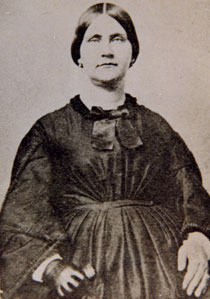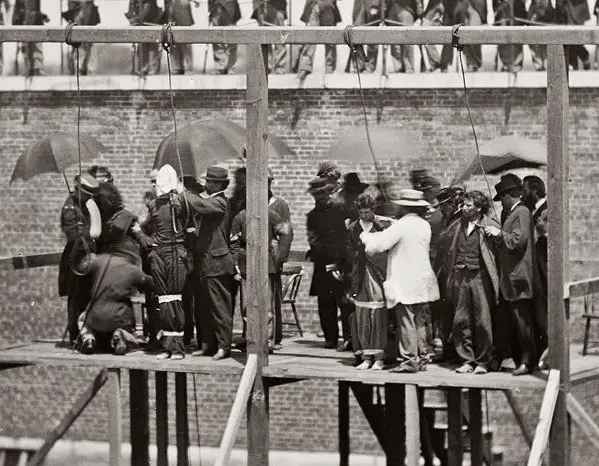
The New York Times reports, "Lincoln, the Play and Everything After: ‘Killing Lincoln,’ on National Geographic Channel," by Neil Genzlinger, on 15 February 2013 -- Tom Hanks, Steven Spielberg’s frequent collaborator, snags himself a seat on Mr. Spielberg’s bandwagon on Sunday when he turns up as the narrator of “Killing Lincoln,” a docudrama on the National Geographic Channel.
If Mr. Spielberg’s “Lincoln” achieves greatness largely through the detailed performances of Daniel Day-Lewis, Sally Field and others, “Killing Lincoln” also has details to recommend it — historical details, the kind of tidbits that (along with Mr. Hanks’s assured narration) can hold your attention, even though the tale is familiar.
“Killing Lincoln,” based on the book by Bill O’Reilly and Martin Dugard, puts its focus just where the title suggests: on the final days of Lincoln’s life and the pursuit of those behind the assassination. And yes, for anyone who can’t get enough of the 16th president, on Sunday it will be possible to arrange a Lincoln trifecta, seeing “Lincoln,” Salvador Litvak’s new film; “Saving Lincoln” (about the president’s bodyguard); and “Killing Lincoln” in a single day. Happy belated birthday, Abe.
“Killing Lincoln” mixes narration with re-enactments to tell a ticktock version of John Wilkes Booth’s plot to kill the president. The film lists Tony and Ridley Scott among its executive producers, and more effort seems to have gone into these re-creations than into those for “Gettysburg,” their earlier foray into Civil War television, seen on the History channel in 2011.
Billy Campbell portrays Lincoln; Jesse Johnson is the hyperbolic Booth; and Geraldine Hughes is Mary Todd Lincoln. This type of production doesn’t give actors a chance to delve deeply, the way Mr. Spielberg’s movie does, but everyone here is convincing enough, which is all that matters. The worst docudramas are those in which the actors are distractingly wooden.

Lewis Thornton Powell
The general story of how Booth and his co-conspirators tried to cripple the government — by simultaneously killing the president, Vice President Andrew Johnson and Secretary of State William H. Seward — is well known, but “Killing Lincoln” does a pretty good job of conjuring the actual attacks, surely among the most shocking few hours in American history. (Seward was seriously wounded but lived; Johnson’s would-be attacker got cold feet.)
One thing that stands out, especially given that this was the first assassination of an American president, is the clear-headed response of a particular cabinet member in the hour after the 10:13 p.m. shooting at Ford’s Theater, when Lincoln, still alive, had been taken to a boardinghouse.
“Shortly after 11 p.m.,” Mr. Hanks relates, “Secretary of War Edwin Stanton sets up a headquarters in the back parlor of the house and establishes relays between there and the War Department telegraph operators. He alerts General Grant and calls him back to Washington, issues emergency directives to police and military authorities, orders the National Detective Police to initiate a manhunt for the as-yet-unknown assassin and notifies Vice President Johnson that the president is dying.”

Mary Surratt
The ticktock technique, often effective in print, has a ghoulish breathlessness to it on film — Mr. Hanks repeatedly reminds us how long Lincoln and then Booth had to live. But those who can overlook that will find a wealth of detail here that brings the tale to life.
It’s no secret that Booth broke his leg, either when he jumped from Lincoln’s box or when his horse fell later, but here we learn that it was “a clean break of his fibula, two inches above the instep of his left foot.”
We learn, too, that Dr. Charles A. Leale, the surgeon who was the first to treat Lincoln and stayed with him for the nine hours until he died, was just 23. We learn that the “wanted” posters for the conspirators were the first to use photographs of suspects and that James Tanner, the stenographer who began taking witness testimony almost immediately after the shooting, was a Civil War veteran who had lost both legs in battle.

Small things, perhaps, but the difference between dry history and history lived by actual human beings. In the film’s final moments we see some of those human beings: photographs of Booth’s co-conspirators, made after they were taken into custody. It’s an eerie, effective flourish.
Produced by Scott Free Productions. Directed by Adrian Moat; written by Erik Jendresen; based on the book “Killing Lincoln: The Shocking Assassination That Changed America Forever,” by Bill O’Reilly and Martin Dugard; Tony Scott, Ridley Scott, David W. Zucker, Mary Lisio, Mark Herzog, Mr. Jendresen and Mr. O’Reilly, executive producers; Christopher G. Cowen and Mr. Moat, producers. Larry Rapaport, line producer; narrated by Tom Hanks. For the National Geographic Channel: Howard T. Owens, Charlie Parsons, Teri Weinberg and Richard E. Wells, executive producers. (source: The New York Times).
The Conspirator: The Plot to Kill Lincoln (National Geographic)


If you are looking to buy bitcoins online, Paxful is the #1 source for bitcoins as it allows buying bitcoins by 100's of payment methods, such as MoneyGram, Western Union, PayPal, Credit Cards and they even allow exchanging your gift cards for bitcoins.
ReplyDelete